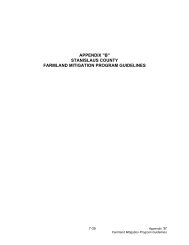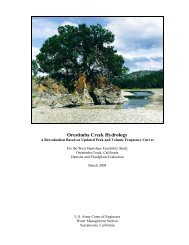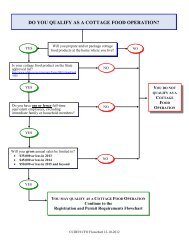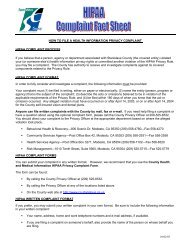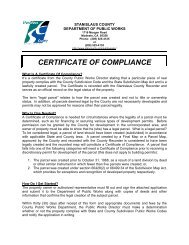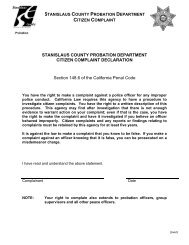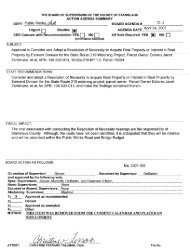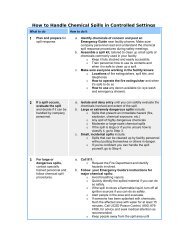Orestimba Creek Feasibility Study - Stanislaus County
Orestimba Creek Feasibility Study - Stanislaus County
Orestimba Creek Feasibility Study - Stanislaus County
Create successful ePaper yourself
Turn your PDF publications into a flip-book with our unique Google optimized e-Paper software.
Economics Appendix – Draft Report - <strong>Orestimba</strong> <strong>Creek</strong> <strong>Feasibility</strong> <strong>Study</strong>, <strong>Stanislaus</strong> <strong>County</strong>, California – September 2012<br />
6.1.1 Project Conditions- Model Simulations<br />
Benefits were determined by incorporating residual with-project floodplains and rating curves<br />
into the FDA model that represent various with project improvements. Flood risk management<br />
benefits equal the difference between the without project damage conditions and the with project<br />
residual damages.<br />
The reduction in project flood plains in both extent and depth from the larger without project<br />
flood plains accounts for the decrease in damages of the given alternative.<br />
6.1.2 Average Annual Equivalent Damages –With Project Conditions<br />
All benefit values in the remaining tables of this report included average annual equivalents,<br />
which because of our assumptions, equal Expected Annual Damages for the <strong>Orestimba</strong> <strong>Study</strong>.<br />
6.1.3 Alternatives Evaluated – Preliminary Screening Net Benefit Analysis<br />
Incremental benefit evaluation to determine which plans to move forward for optimization into<br />
the final array was formulated based on reasonable separable project features and sizing.<br />
Features were identified and categorized based on potential flood reduction and magnitude of<br />
cost. Levee Design Height (height based on depth of water for the given flood event at levee<br />
location) was used to select reasonable increments for benefit evaluation. 2%, 1%, 0.5% and<br />
0.2% annual chance design heights were considered. As mentioned earlier, details of the project<br />
components and selection can be found in the main report. With project residual damages and<br />
benefits were modeled for all of the increments/alternatives listed in Table 6-1. In total,<br />
seventeen different project increment combinations were modeled and analyzed economically<br />
during this screening process. Annual benefits in the table, represent the difference between the<br />
without and with project equivalent annual damages for each alternative. Costs are based upon<br />
preliminary reconnaissance costs, but are all at the same level of detail for this screening<br />
purpose. Because this analysis was done in 2009 and only serves as a screening to in order to<br />
choose plans to further optimize, price levels were not updated from October 2008.<br />
32






